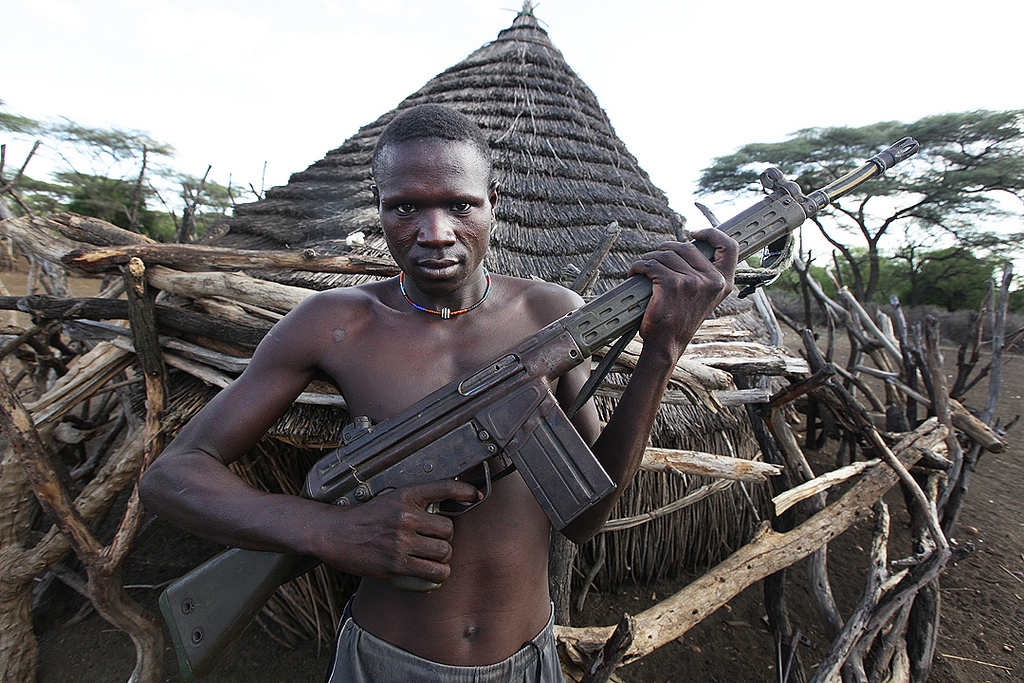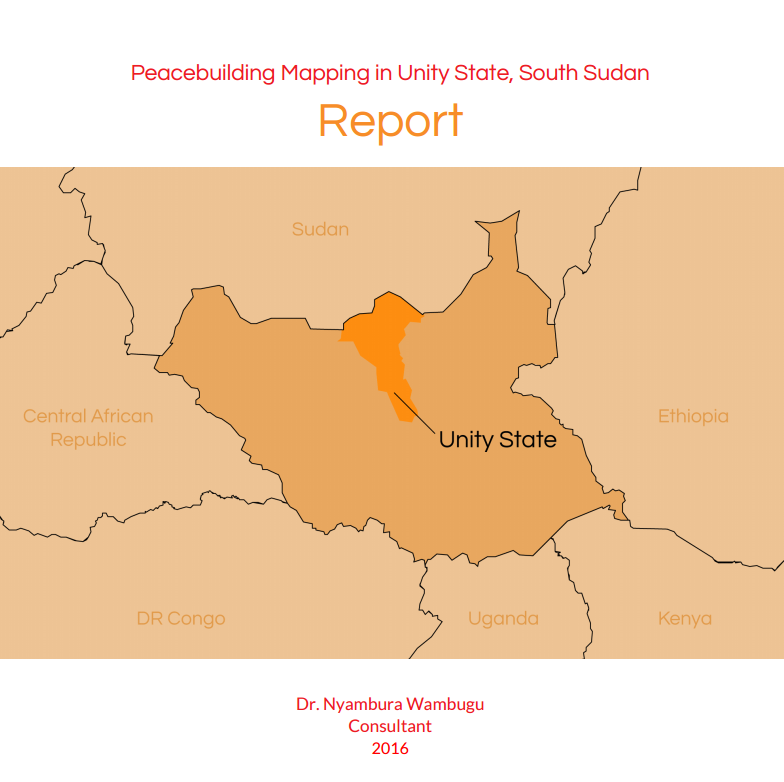
Local conflicts have a long history in Unity State, South Sudan, but so do local means of resolving them.
Local capacities to address community level conflicts continue to exist, although they are strained by the increased number and severity of local level conflicts.
Following five years of work supporting local peacebuilding in the Sudanese province of South Kordofan, Peace Direct commissioned a mapping of local peacebuilding capacities in Unity State, across the border in South Sudan.
This mapping exercise set out to document peacebuilding organisations working at the local level with the aim of providing insights into the opportunities and challenges they face. It identified competent and effective local peacebuilders in Greater Unity State, South Sudan.
To better support local peacebuilding and the delivery of more peacebuilding activities, this research makes recommendations to the international community, and international and local organisations, working to support local peacebuilding.
Read the full report by clicking on the image below. 
Local peacebuilding in South Sudan
After some years of relative peace and great optimism following independence from Sudan, conflict once again broke out in South Sudan in 2013.
At the political level, the war sees the government’s ruling party - the SPLA - pitted against the SPLA-In Opposition, with a strong ethnic dimension of a power struggle between two rival pastoralist groups, Dinka and Nuer.
The war has had devastating humanitarian consequences and led to an increase in the number and severity of local, community level conflicts over natural resources, historical grievances and power.
In Unity State, such conflicts occur between groups within Unity; between Unity and neighbouring states; and between migrating pastoralists originating from Sudan who travel south in search of pastures for their cattle.
Key Findings
- There are 37 formal and informal local organisations, committees, religious groups and other actors working on peacebuilding at the community level in Unity.
- There are 12 international NGOs that include a focus on supporting local peacebuilders in Unity in their work.
- There are more than 40 different local level conflicts in Unity, yet only a very few of these are being addressed by the actors identified at the moment.
There are several different types of local level conflict in Unity
- Inter-community conflicts: cattle raids between Dinka and Nuer communities from Unity, Warrap and Lakes States have increased in intensity and levels of violence.
- Intra-community conflicts: local disputes within Unity between different clans, for example over early pregnancies or elopement, have become more violent.
- Cross-border conflicts: conflicts between Sudanese pastoralists and host communities in Unity have increased since South Sudan’s independence now that pastoralists need to cross an international border and pay multiple taxes in South Sudan. The mapping investigated key challenges and opportunities for local and international peacebuilders in Unity. A workshop in Juba brought together a broader set of actors to discuss such challenges and opportunities to local peacebuilding work more broadly in South Sudan.
Key challenges to local peacebuilding
- Lack of funding for peacebuilding work, in particular longer-term funding for more sustainable initiatives.
- A shift in donor priorities to (almost exclusively) humanitarian assistance has made funding for local peacebuilding work even more scarce. This is compounded by the fact that many international organisations have pulled out their staff from Unity.
- Poor infrastructure (roads and telecommunications) and seasonal rains make local peacebuilding work difficult.
- Nepotism impedes local peacebuilding and efforts to support it. Political and governmental actors are at times actively involved in inciting different groups against each other.
- Corruption and manipulation of youth reinforces tribalism and polarisation between different groups.
- The widespread availability of small arms and light weapons, and lack of success in disarmament efforts, is a major threat to peace.
- Local organisations and actors are looking for support to strengthen their knowledge and capacity in peacebuilding, mediation and community engagement.
Key opportunities for local peacebuilding
- Local organisations and actors can continue to access local communities even during times of conflict.
- Local organisations and actors can draw on local and traditional knowledge and a high degree of local legitimacy, to engage in peacebuilding.
- Local peacebuilding can include a focus on addressing conflict issues in providing alternative livelihoods for youth or natural resources where there is scarcity, and on disarmament.
- Local peacebuilding is supported by a variety of actors at the local level, including specifically established peace committees, traditional leaders, religious leaders and government actors, including law and justice.
How can the international and national mutually reinforce each other?
Local organisations and actors look to international organisations for support in terms of funding, training and capacity development. International organisations can lobby for and access funding and international expertise to support local peacebuilders.
They can also play a role in making sure local perspectives are heard and integrated into political peace processes. It is important to include local issues in political peace processes. Doing so would enhance the likelihood of political agreements being implemented.
Conclusion
This mapping exercise shows there are a number of local organisations and actors that engage in peacebuilding. Local peace committees, traditional and religious leaders have played, and can continue to play, a role in helping resolve inter-community, intra-community and cross-border conflicts. But funding has been largely diverted to humanitarian needs.
International development actors classify peacebuilding as a ‘post-conflict’ activity only. But this mapping has shown a great need for more work at the local level, even whilst the war continues.
Recommendations
Local ownership
Sustained peace can only be achieved when local communities take ownership of local peacebuilding efforts.
Long-term peacebuilding
Local peacebuilding must take a long term approach to successfully engage in complex conflicts and rebuild community relations.
Disarmament
Local peacebuilding efforts should include work on disarmament, but this needs to be well-coordinated and transparent.
Community dialogue and inclusion
Local peacebuilding should include bottom-up and inclusive dialogue processes. This way, local norms and traditions can be built upon, whilst at the same time including groups that are not always included in peacebuilding, such as women and youth.
Strengthening connecting factors
Strengthening activities and relationships that build connections between different groups - like trade and markets - can reinforce peacebuilding efforts.
Create employment opportunities for youth
Supporting alternative livelihood opportunities for youth can help prevent them from being drawn into violence.
Support local NGOs
Local NGOs can be supported to strengthen their capacities to effectively mitigate violent local conflicts.







